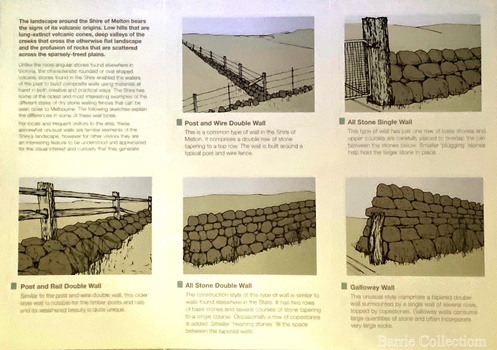Historical information
"The dry stone walls provide a tangible link to the area’s white settlement, and they remain a symbol of the profound change in
land usage from the original Kulin custodians to the European arrivals of the nineteenth century.
The bulk of dry stone wall construction in Victoria occurred between the 1850s and 1880s.
The gold rush of the early 1850s in particular inspired a flurry of construction. At this time, labour previously available for shepherding livestock dried up, as men gravitated to the goldfields to seek their fortunes. This necessitated the building of fencing to contain the district’s growing number of sheep, cattle and horses. An explosion in surveying, subdivision and the sale of Crown
lands also contributed to a boost in construction. Government regulations that punished pastoralists for allowing their livestock to stray provided further incentive to fence-off previously open expanses of land.
The major benefit of this type of fencing was that it utilised the materials at hand; the plentiful grey basalt that scattered the landscape. In the case of the dry stone walls built around Melton, the characteristic round or oval shape of the volcanic fieldstones on the western plains
inspired some distinctive designs.54 Another advantage of dry stone walls was their ability to withstand the ravages of flood, fire and drought often experienced in the district. This durability accounts for the fact that many of these fences still exist today".
Physical description
Dry Stone Wall trail brochure/pamphlet for visitors provided by Melton Visitor Information Centre








